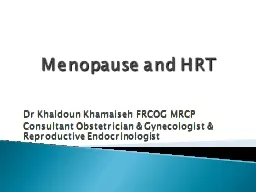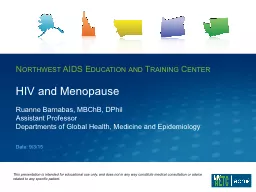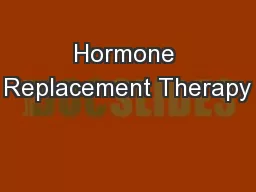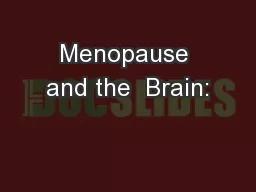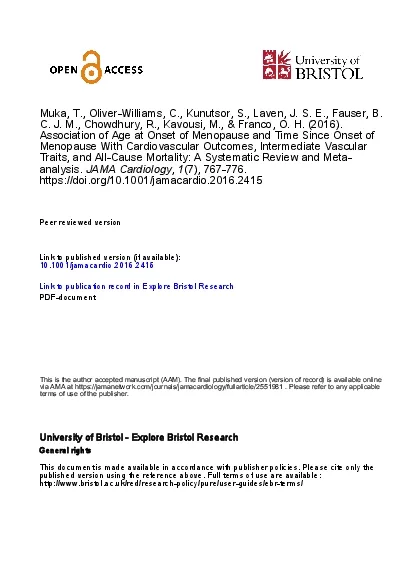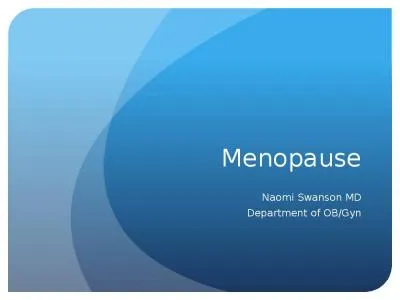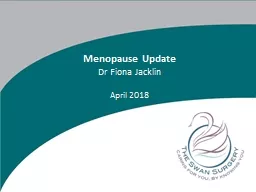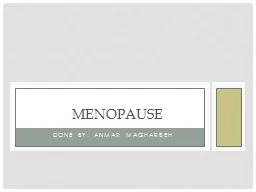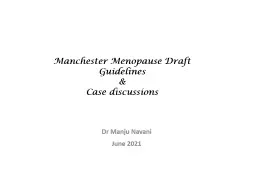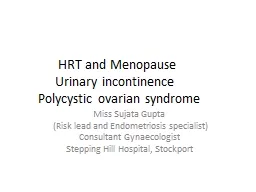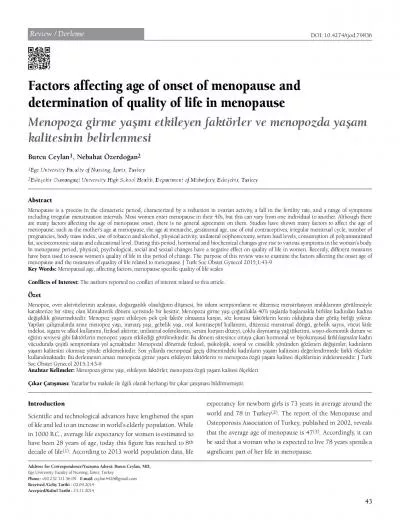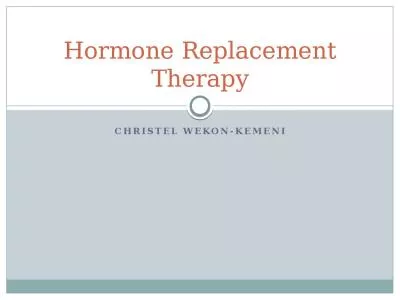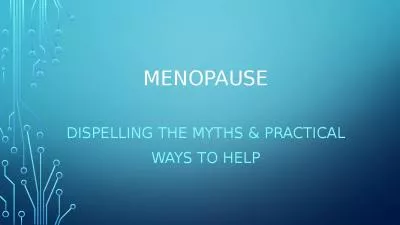PPT-Menopause and HRT Dr Khaldoun
Author : caitlin | Published Date : 2022-06-08
Khamaiseh FRCOG MRCP Consultant Obstetrician amp Gynecologist amp Reproductive Endocrinologist Endocrinology and physiology Natural history Symptoms of the menopause
Presentation Embed Code
Download Presentation
Download Presentation The PPT/PDF document "Menopause and HRT Dr Khaldoun" is the property of its rightful owner. Permission is granted to download and print the materials on this website for personal, non-commercial use only, and to display it on your personal computer provided you do not modify the materials and that you retain all copyright notices contained in the materials. By downloading content from our website, you accept the terms of this agreement.
Menopause and HRT Dr Khaldoun: Transcript
Download Rules Of Document
"Menopause and HRT Dr Khaldoun"The content belongs to its owner. You may download and print it for personal use, without modification, and keep all copyright notices. By downloading, you agree to these terms.
Related Documents

